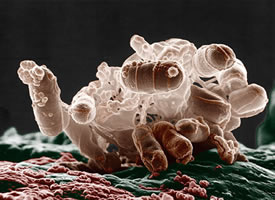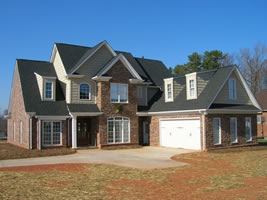Warm Spring days bring the carpenter ants out of hibernation in CT. Schedule your Pest Inspection today. Longer days lead to increased heating of ant nests and soon worker ants can be seen foraging. The first carpenter ants seen are usually sluggish, and headed towards moisture sources. Since carpenter ants feed on honey dew and insects that they either capture or find, natural food sources are rare in Spring. Moisture sources such as sinks, showers, bathtubs, toilets, and water leaks offer a drink of water after a long winter. Some foods like wet cat food, soda cans, sugar, or grease may also serve as a quick source of energy until their natural food sources awaken outdoors.
Once trees and shrubs start to produce new leaves and flower buds the associated insects that feed on them show up. Aphids, inchworms, scales, mealy bugs, whiteflies and a host of others all serve as dinner for the hungry carpenter ants. Rotting fruit, or dead animals may also provide sugars and protein for a carpenter ant colony. Carpenter ant nests located outside generally take longer to wake up in CT. Ants seen inside a house early in Spring usually means that the colony is living somewhere within. Typical nest locations include but are not limited to: exterior columns, steps, decks or porches; roof rafters, joists, and sheathing; roof trim and siding; interior walls and ceilings; hollow doors, door and window frames; sills, joists, and sub floors.
Damage from carpenter ants can be extensive, and may be accompanied by some type of moisture problem. Carpenter ants excavate channels or galleries used for living space within wooden members. Over time these galleries may become quite large and complex. Frass, a mixture of small wood chips, fecal material, and dead insect parts, may be ejected from the …
Continue Reading→
 Coliform and E.Coli Bacteria in Your Well water. Bacteria exist in many Connecticut well waters, especially shallow or poorly constructed wells under the influence of water from the surface. However even if your
Coliform and E.Coli Bacteria in Your Well water. Bacteria exist in many Connecticut well waters, especially shallow or poorly constructed wells under the influence of water from the surface. However even if your 